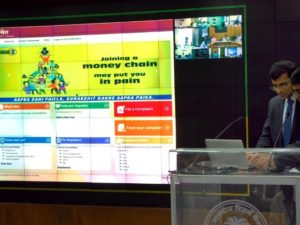Fund raising through initial public offerings (IPOs) has crossed $2.9 billion in 2016 and another $2.9 billion is to be raised through these offerings this year, according to a research report by Baker & McKenzie.
Around 22 companies are waiting to tap the markets bringing the year-end estimated total deal value to $ 5.8 billion, more than double last year’s $2.18 billion from 71 listings, and also the highest since 2011, the report said.
The report further said that 16 companies are in the pipeline to be listed domestically in 2017, raising as much as $5.86 billion, including Vodafone’s highly anticipated $3 billion IPO, which could potentially surpass the state-run Coal India’s IPO in 2010 to become India’s biggest IPO.
The report said the momentum in India’s IPO market continues to build, boosted by the central government’s push to ease of doing business in India.
The report added that Goods & Services Tax (GST) Bill which will take effect on 1 April 2017 will have a positive effect on the market.
“The GST Bill will not only bring about the immediate benefit of widening the country’s tax base and improving the revenue productivity of domestic indirect taxes, but more importantly, it sends the message to the people of India and the rest of the world that the Indian government is committed to the country’s economic reform, further bolstering India’s attractiveness as an investment destination,” said Ashok Lalwani, head of Baker & McKenzie’s India Practice.
The report said dual listing on both the Bombay Stock Exchange (BSE) and the National Stock Exchange (NSE) of India accounted for 98.8% of Indian companies’ listings by value in 2016 year to date, raising a total of $ 2.9 billion from 19 IPOs, including ICICI Prudential Life Insurance’s $909 million IPO, which is the country’s biggest IPO this year.
A total of 33 companies are expected to dual list on both the BSE and the NSE by the end of 2016, raising a total of $4.62 billion. Improved business confidence is also driving Indian companies to look at growth and market expansion opportunities overseas by way of cross-border IPOs, the report said.
Among the 22 IPOs in the 2016 pipeline is Strand Life Sciences’ listing on NASDAQ, which if it goes ahead, will be India’s first cross-border IPO since early 2015 when Videocon d2h got listed, the report added.






